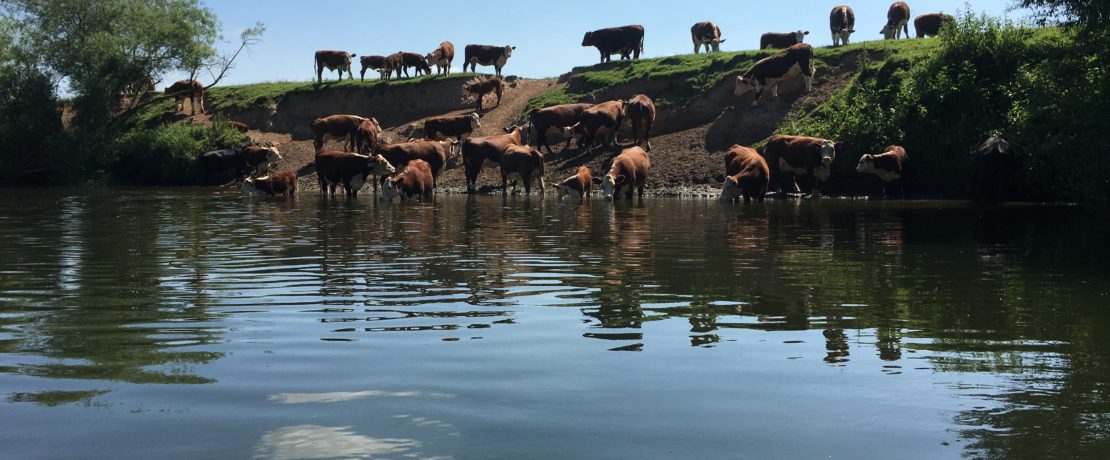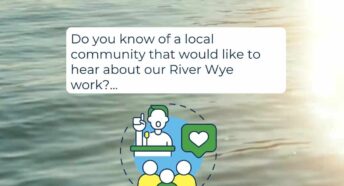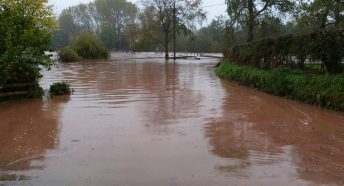Save the Wye campaign – we’re keeping up the momentum!
People from all walks of life in Herefordshire are desperately worried about the state of the county’s rivers. It’s now time for statutory bodies – the Environment Agency, Defra, Natural England,Natural Resources Wales and both the English and Welsh governments to act. We call on them to work together on a whole-catchment basis and take decisive moves to save the Wye.
The problem of phosphate pollution in our rivers is not new. High levels can cause algal blooms which smother and kill both plants and fish. However, what is increasingly problematic is the rocketing numbers of chicken production units (whether for eggs or meat). These intensive units produce approximately 200,000 tonnes of manure a year in the Wye catchment area.
The Environmental Audit Committee of MPs (EAC) has recently highlighted to Parliament the very poor state of our rivers in their “Water Quality in Rivers” report (summary here). This publication supports our view that a cross border catchment approach is needed, with a ban on any further intensive poultry units being given planning consent.
Herefordshire Council contributed to the debate by writing this letter to the EAC about the Wye in October.
The EAC’s report makes unpleasant reading and sadly the Wye merits a specific mention. However at least the problem is in the limelight nationally. The government has 2 months to respond and we await that response with interest. A quote from the summary below:
“Intensive livestock and poultry farming is putting enormous pressure on particular catchments, such as the one feeding the River Wye. As many as twenty million chickens are being reared there and their waste may be raising the river’s phosphorus levels. Planning permission seems to be granted for individual units without any cumulative assessment being made of the overall impact of all the intensive farms in the area. Each catchment should have a nutrient budget calculated. Pollution from all sources in the catchment must then be progressively reduced or mitigated until it does not exceed the capacity of the river to handle the nutrients. New poultry farms should not be granted planning permission in catchments exceeding their nutrient budgets.”
One of our representatives the Rt Hon Jesse Norman MP is raising the issue and demanding cross-border action from the responsible agencies with proper funding. He has also raised this issue at Prime Ministers Questions.
In October a major chicken production company, Avara foods, finally admitted at a Nutrient Management Board meeting that it is part of the problem and responsible for finding a solution. Avara owns and runs many parts of the chicken farming process in Herefordshire. Read more in this story from the Ross Gazette.
The Pressure Mounts
A recent Nutrient Management Board meeting acknowledged that little had been achieved to halt pollution in the last seven years and passed a motion to start the process of obtaining a Water Protection Zone (WPZ) for the whole of the Wye Catchment. Regulatory agencies now have an obligation to start the process and place evidence before Government to get a WPZ.
A Herefordshire Council meeting voted on a similar motion later in the week and recorded a unanimous vote to start the process of obtaining a WPZ. Click here for their letter to Rebecca Pow MP at Defra.
Both of these votes are very significant and in line with the thoughts of many other agencies and groups. A WPZ makes very clear the nutrient rules and acceptable levels and allows much swifter enforcement. Nutrient neutrality is a similar idea that has been mentioned and within the mix we will hopefully get the protection needed for the Wye and see a reversal strategy to return the waterway to health. Our environment needs to be free from pollutants.
Citizen Science
We now have 400 plus Citizen Scientists (CS) in Herefordshire on a mission to regularly test both the Wye and the rivers that run into it. Our commitment started in the middle of 2021 but Friends of the Upper Wye and the Wye Salmon Association have been testing for much longer. We have just extended our CS reach in the far north of Herefordshire and on the river Teme.
The Environment Agency have committed to analysing and acting upon the data we provide as part of a larger study of the whole catchment.
Following lobbying by us and other parties the Nutrient Management Board has called for a formal assessment of the number of poultry numbers farmed in the catchment (thought to be in excess of 20 million in Herefordshire and at least 4 million in Powys). The Environment Agency and Natural Resources Wales have both acknowledged the significant contribution Citizen Science is making today and will make in the future.
Legacy Phosphate – RePhoKUs
We recently attended a report and further update on RePhoKUs; a Leeds & Lancaster University project on the phosphate levels found in the Herefordshire soil. Their preliminary findings about a year ago suggested that 2000 tons of excess phosphate in either chemical fertiliser or in manure were spread on the land. This is 2000 tons more than the growing crops take out. This had created a legacy build up year after year and suggested there was up to five years’ worth of phosphate that could potentially be used without anything more being added to the soil. This was an alarming situation when the data was first presented.
But their review this year is even more worrying when analysis of new data suggests that approximately 3000 tons of excess phosphate are applied every year. The report’s conclusion is a simple “This has to stop” Their scientific paper is currently under review and they hope to publish it in the Spring. This excessive waste is both a main cause of pollution but also an unnecessary cost to farmers.









